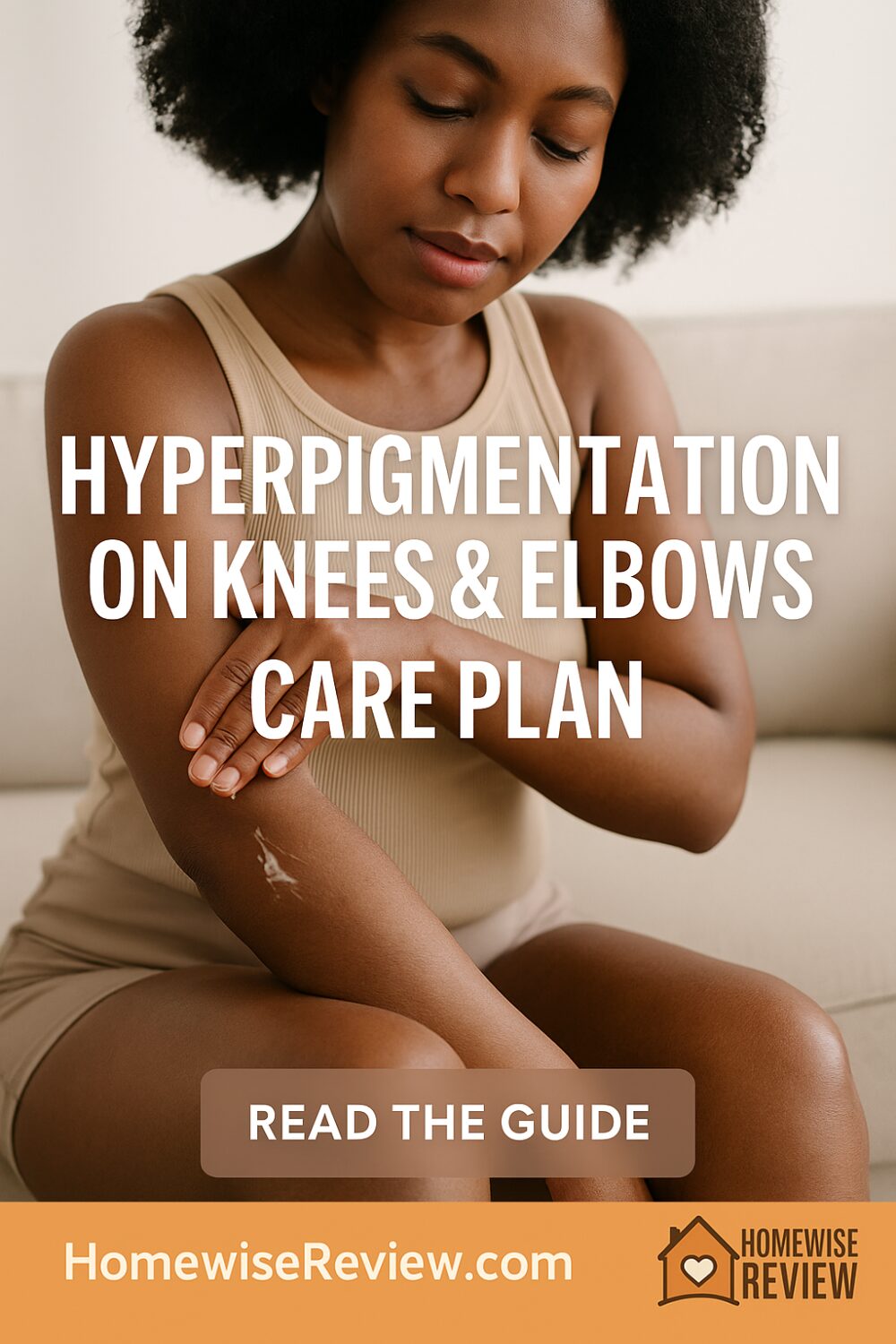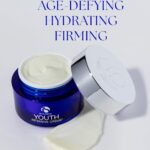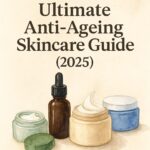
Even out tone safely with simple weekly habits.
Dark knees and elbows are common. Friction, dryness, and old inflammation can leave the skin thicker and darker than the rest of your body. This plan gives you a gentle, realistic routine that softens texture, reduces discoloration over time, and keeps results from sliding back.
Why knees and elbows darken
- Friction and pressure: leaning, kneeling, tight sleeves, or rough gym mats create micro-irritation that triggers extra pigment and thicker skin.
- Dryness and buildup: dead skin collects faster on joints.
- Post-inflammatory marks: old rashes, bug bites, or scrapes can leave lingering pigment.
- Sun exposure: uncovered joints often get the most light.
- Medical flags to note: sudden, velvety dark thickening or persistent itching can signal a skin or metabolic condition. If you see that, check in with a clinician before starting actives.
What you’ll need
- Gentle body cleanser and soft washcloth
- Urea cream 10% for smoothing and hydration
- Lactic acid lotion 5–12% or a mild AHA body treatment
- Optional targeted brighteners: niacinamide 4–5%, tranexamic acid 2–5%
- Broad-spectrum SPF 30+ for exposed days
- Occlusive for nights when skin is very dry (petrolatum or similar)
- Soft sleeves or knee pads for high-friction activities
The weekly care plan
1) Reset and soften (2–3 nights per week)
- Cleanse the area and pat until damp.
- Apply lactic acid 5–12% thinly.
- Seal with urea 10% or a simple moisturizer on top.
Why it works: lactic acid loosens dead skin and urea hydrates while gently dissolving rough buildup.
2) Brighten without irritation (3–5 times per week)
- On nights you are not using lactic acid, apply niacinamide or tranexamic acid to clean, dry skin, then moisturize.
- Keep layers light. You are treating a small area, not icing a cake.
3) Mechanical exfoliation rules (once weekly, optional)
- If you like a manual buff, use a soft washcloth for 30–60 seconds max, only on moisturized skin in the shower.
- Skip pumice stones and harsh scrubs. Over-rubbing delays progress.
4) Daytime protection (daily)
- Use SPF 30+ on exposed days, especially in shorts or short sleeves. Repeat if you are outside for hours.
- For gym or housework, add a soft sleeve or knee protection to lower friction.
5) Night rescue for extra-dry weeks (as needed)
- After your moisturizer, add a thin occlusive layer just on the joint. This traps water overnight and softens texture by morning.
6) Progress checkpoints
- Photos every two weeks in similar lighting.
- Expect texture to soften first, then tone to gradually even over 6–12 weeks.
- If stinging or flaking persists more than a few days, reduce active frequency.
Adjust by skin and lifestyle
- Sensitive skin: start lactic acid once weekly and build up. Keep niacinamide as your main brightener.
- Very dry skin: swap one brightener night for a plain moisturizer night. Urea 10% can be used daily.
- Outdoor jobs or sports: sunscreen becomes non-negotiable. Consider UPF sleeves for coverage.
- Darker skin tones: be cautious with aggressive scrubs and high-strength peels, which can backfire and darken more.
Product picks (4)
1) Urea 10% Body Cream
Why it works: Softens thick, rough patches and increases water content so joints feel flexible.
How to use: Twice daily on knees and elbows. Pair with actives at night.
Keep in mind: A mild tingle is normal. Broken skin needs a break.
Who it’s for: Rough, flaky knees and elbows that need steady smoothing.
2) Lactic Acid Body Lotion 5–12%
Why it works: Gently exfoliates and hydrates to reduce ashiness and buildup.
How to use: Thin layer on damp skin 2–3 nights per week.
Keep in mind: Do not stack with scrubs the same day.
Who it’s for: Texture plus tone concerns.
3) Tranexamic Acid Spot Serum 2–5%
Why it works: Targets stubborn pigmentation from friction or old inflammation.
How to use: Small amount on clean, dry skin on off-nights from AHA.
Keep in mind: Consistency beats high strength.
Who it’s for: Lingering dark patches that resist moisturizers alone.
4) No-cast Mineral SPF 30+
Why it works: Prevents re-darkening and protects thinned, freshly exfoliated skin.
How to use: Morning and before outdoor activity on any exposed joints.
Keep in mind: Reapply after sweat or swim.
Who it’s for: Everyone working on tone.
If you purchase through links on our site, we may earn a small commission at no extra cost to you.
Quick fixes vs long-term habits
- Quick fix: Before an event, use urea 10% on damp skin, let it sink in, then apply a light body oil for immediate glow.
- Long-term: Reduce friction, keep weekly AHA + urea rhythm, and protect from sun. That is the trio that holds results.
Final Thoughts
Smoother, more even knees and elbows come from consistency, not scrubbing harder. Keep friction low, hydrate daily, and rotate a gentle AHA with targeted brighteners. Protect the progress with sunscreen and soft fabrics. Give it a few weeks and you will see texture soften, then tone follow.
See also
If your goal is targeted brightening, pair this routine with Tranexamic Acid Serums for Stubborn Dark Spots and Best Dark Spot Correctors to choose actives that layer well and fit your budget without overcomplicating things. For ingredient clarity, Niacinamide Myths vs Reality: What It Can and Cannot Do keeps expectations realistic so you do not overuse products.
Texture matters too. If your skin tends to react, Best Exfoliators for Sensitive Skin outlines gentler options that still make progress. For sunny seasons and outdoor routines, Mineral Sunscreens That Do Not Leave a White Cast helps you find daily protection that plays nicely on deeper skin tones.
FAQs
1) Can I use a peel on my knees and elbows to speed things up?
You can, but start with low-strength AHA lotions. Strong peels can irritate and darken if overused.
2) How long until I see results?
Texture often improves in 2–4 weeks. Tone changes are gradual and may take 6–12 weeks of steady care.
3) Are scrubs or pumice stones safe?
Gentle cloth buffing is fine once weekly. Harsh tools create micro-tears and can worsen pigmentation.
4) Can I use retinoids on joints?
Yes with care. Start twice weekly in place of your AHA night and moisturize well. Pause if irritation appears.
5) What if the area is itchy or looks velvety and thicker than usual?
Press pause on actives and see a clinician to rule out skin conditions that need medical treatment.
Affiliate Disclosure
If you purchase through links on our site, we may earn a small commission at no extra cost to you.




